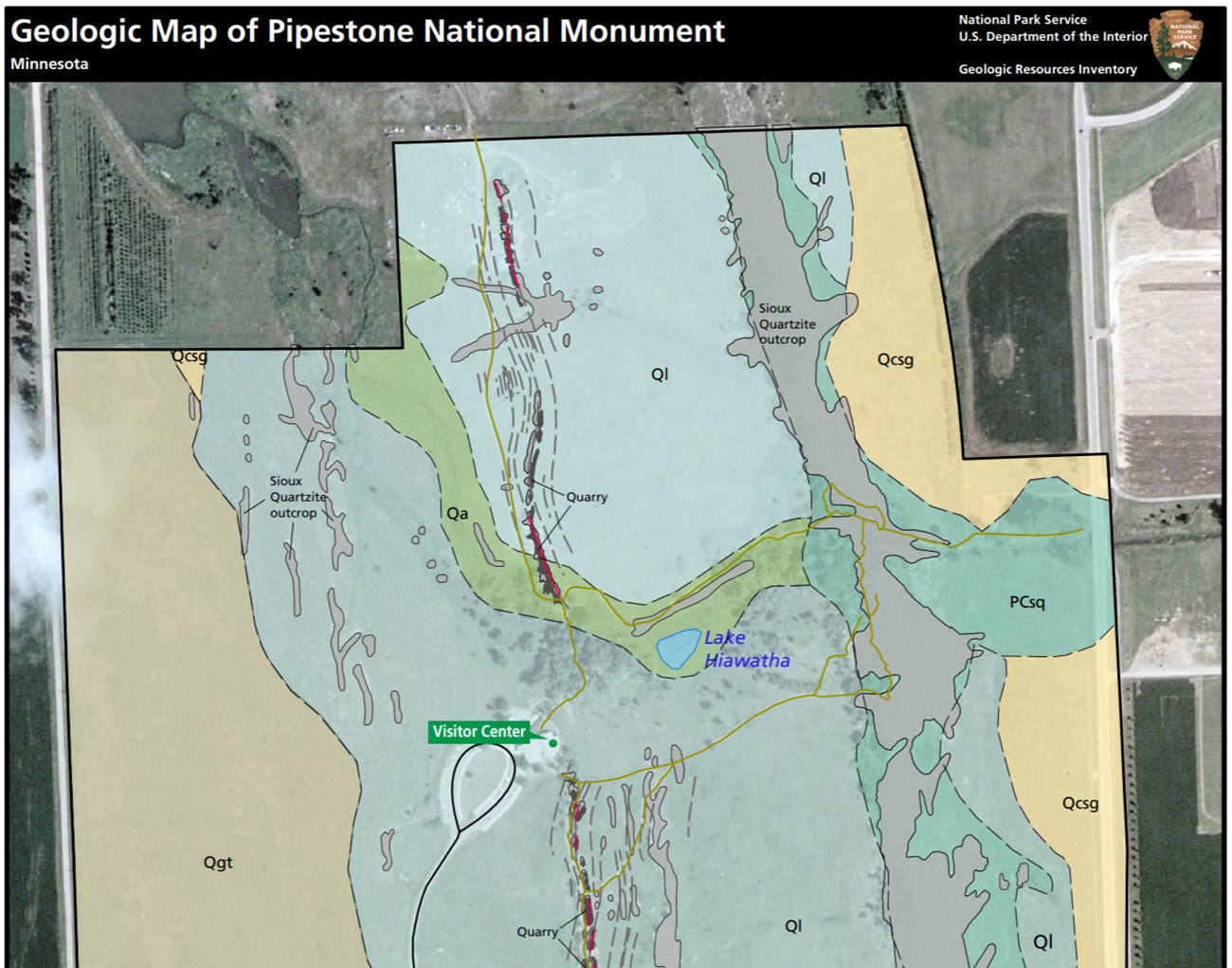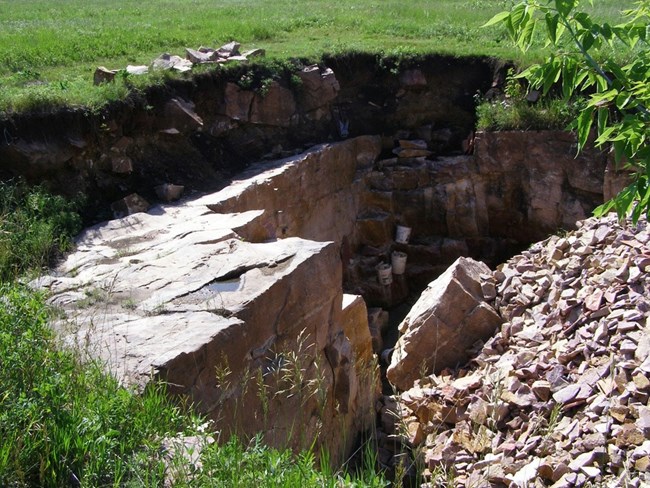Last updated: July 15, 2024
Article
NPS Geodiversity Atlas—Pipestone National Monument, Minnesota
Geodiversity refers to the full variety of natural geologic (rocks, minerals, sediments, fossils, landforms, and physical processes) and soil resources and processes that occur in the park. A product of the Geologic Resources Inventory, the NPS Geodiversity Atlas delivers information in support of education, Geoconservation, and integrated management of living (biotic) and non-living (abiotic) components of the ecosystem.

Introduction
Pipestone National Monument (PIPE) is located just north of the city of Pipestone in Pipestone County, southwestern Minnesota. Established on August 25, 1937, PIPE contains about 114 hectares (282 acres) and preserves pipestone (catlinite) quarries that have been mined and utilized by Native American cultures from prehistoric times to the present (National Park Service 2016a). The monument reserves the quarrying of pipestone for Native American use, where it is carved into objects such as pipes that are used in sacred ceremonial practices. The brick red pipestone of PIPE is prized for its soft, durable nature, and served as a popular trade item between tribes of the Great Plains and beyond. Quarries within PIPE remain part of a spiritual landscape and represent a pilgrimage location for many Native Americans. Pipestone is still collected here and sculpted by tribal members for use in ceremony (National Park Service 2017d). PIPE is listed in the National Register of Historic Places in recognition of its cultural significance, extensive archeological resources, and the Three Maidens petroglyphs found in the southern portion of the monument.
Geologic Setting
The geology of Pipestone National Monument consists of two categories of strata with drastically different ages: (1) ancient metamorphic bedrock of the Paleoproterozoic Sioux Quartzite; and (2) unconsolidated Quaternary surficial deposits. The Sioux Quartzite is a thick unit that was deposited approximately 1.76 to 1.60 Ga by fluvial systems and subsequently metamorphosed during the Mazatzal Orogeny (Jirsa et al. 2015). Although the formation predominantly consists of quartzite, the major catlinite beds of the monument occur throughout the unit as discontinuous layers and lenses as much as 1 m (3 ft) thick (Morey 1983; Graham 2017b). The catlinite beds are deep red to pale orange claystone beds that represent accumulations of very fine-grained material (silt and clay) containing little to no quartz (Morey 1983). Draped across most of the monument bedrock is a veneer of surficial deposits composed of unconsolidated glacial till, loess, calcareous sand and gravel, and small bands of alluvium mapped along Pipestone Creek.
Regional Geology
Pipestone National Monument is a part of the Central Lowland Physiographic Province and shares its geologic history and some characteristic geologic formations with a region that extends well beyond park boundaries.
- Scoping summaries are records of scoping meetings where NPS staff and local geologists determined the park’s geologic mapping plan and what content should be included in the report.
- Digital geologic maps include files for viewing in GIS software, a guide to using the data, and a document with ancillary map information. Newer products also include data viewable in Google Earth and online map services.
- Reports use the maps to discuss the park’s setting and significance, notable geologic features and processes, geologic resource management issues, and geologic history.
- Posters are a static view of the GIS data in PDF format. Newer posters include aerial imagery or shaded relief and other park information. They are also included with the reports.
- Projects list basic information about the program and all products available for a park.
Source: NPS DataStore Saved Search 3148. To search for additional information, visit the NPS DataStore.
A NPS Soil Resources Inventory project has been completed for Pipestone National Monument and can be found on the NPS Data Store.
Source: NPS DataStore Saved Search 3099. To search for additional information, visit the NPS DataStore.
GRI Geology Image Gallery
Related Articles
Pipestone National Monument
National Park Service Geodiversity Atlas
The servicewide Geodiversity Atlas provides information on geoheritage and geodiversity resources and values within the National Park System. This information supports science-based geoconservation and interpretation in the NPS, as well as STEM education in schools, museums, and field camps. The NPS Geologic Resources Division and many parks work with National and International geoconservation communities to ensure that NPS abiotic resources are managed using the highest standards and best practices available.


